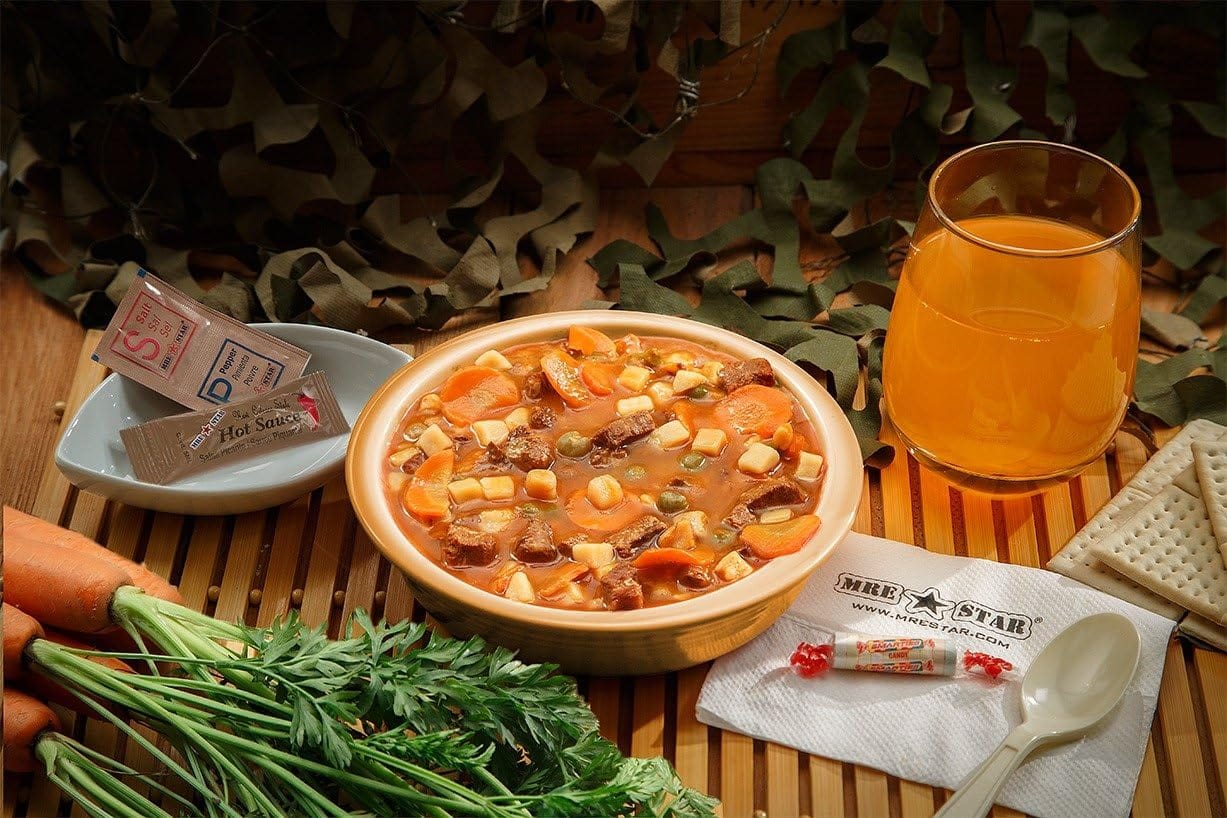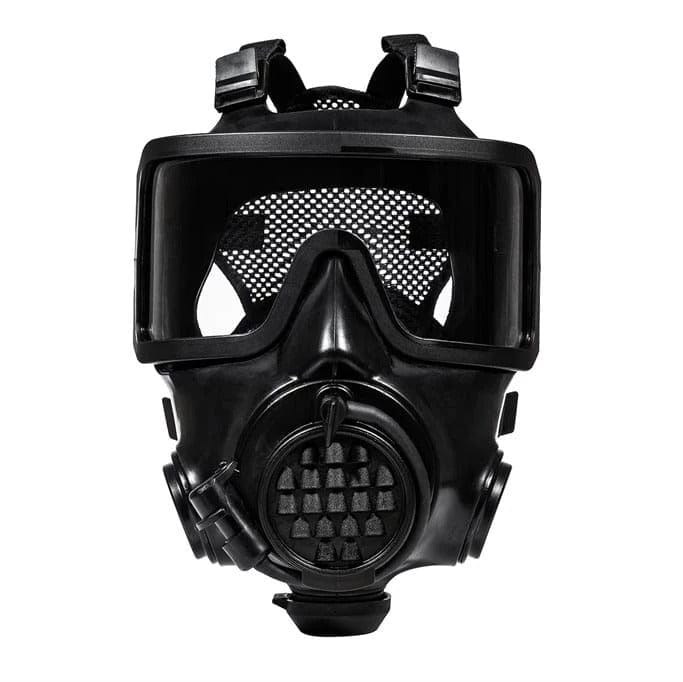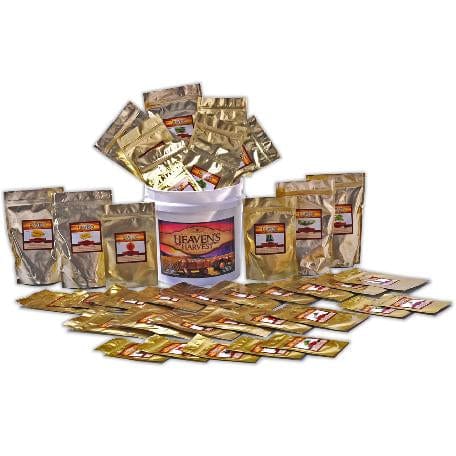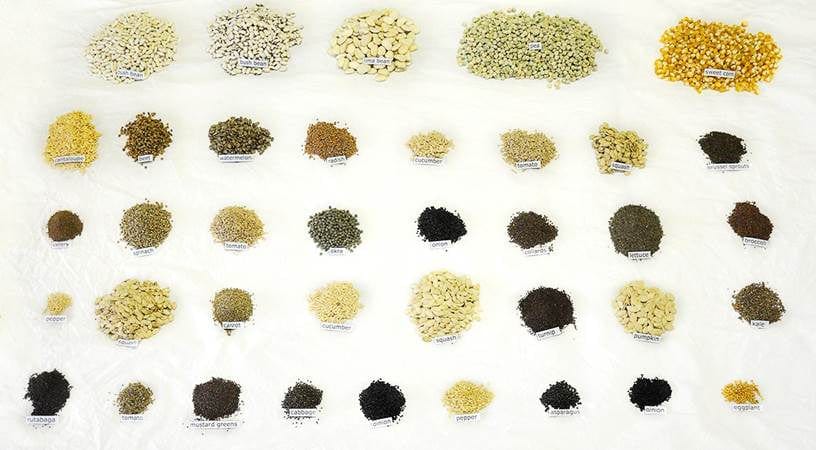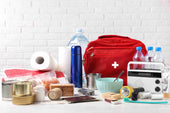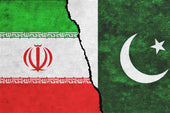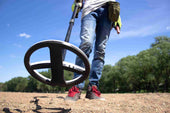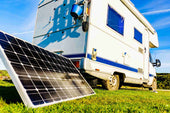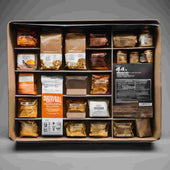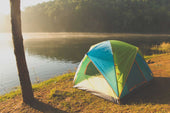A significant population is unprepared when a disaster strikes because it doesn't come with a warning.
Most individuals don't even consider carrying survival food with them; they carry enough food for three to four weeks.
For this reason, people rush to grocery stores and supermarkets to get as much food as possible during emergencies. If you don't learn how to prepare, you can become one of these individuals.
Setting up a food storage system at home is straightforward, and almost all the materials are available at your local grocery shop.
Use the moments when things are every day and the lines are shorter to your advantage. One could argue that the moment is now. We're experiencing a pandemic and an economic downturn worse than the Great Recession of 2008.

Despite improved technology, online shopping, and stores opening in all areas, the Best Survival Food List From The Grocery Store For Preppers is still necessary.
Through comprehensive research on food storage, preparation, and survival methods, we've listed some of the best foods for preppers at your local grocery store.
We'll explore the most incredible grocery store survival foods to help you assemble a comprehensive food storage system.
Comprehensive research on food storage, preparation, and survival methods lists some of the best survival foods below for preppers at your local grocery store.
We'll delve deeper into the most incredible grocery store survival foods for assembling a comprehensive food storage system.
Things to consider before shopping:
When prepping, grocery stores are always the first stop. It is simple to overlook everyday grocery goods, yet many include foods ideal for long-term storage since they are shelf-stable.
It would be best to be well-versed in the crucial factors to consider while creating your emergency food supply list before shopping. The general guidelines are as follows:

■ Cost. You must do careful financial planning if you want to purchase emergency food.
■ Calories. The golden rule for food storage in a survival situation is to have 2,000 calories or more per person per day to guarantee that everyone is healthy and has enough energy.
■ Storage capacity. You must be aware of this before buying survival food because some foods have longer shelf lives than others.
■ Nutrition. Variety in your diet is the best way to guarantee that your body will receive all the required nutrients.
■ Easy-to-prepare foods. Prioritize easy-to-prepare foods that can be cooked using boiling water and a frying pan. You may not have full access to your kitchen during an emergency.
■ Check the Expiration Dates. It does not imply that something is fresh just because it is sold at the local grocery store. Ensure that a product was recently packaged in the store before purchasing it.
■ Size. Make sure you have enough servings for everyone.
Best Survival Food List From The Grocery Store for Preppers

In recent years, food storage has become increasingly popular, and more individuals than ever are stockpiling food.
There has never been a more crucial time to practice food storage at home, whether you are preparing for the next pandemic or the zombie apocalypse or just want to be ready for an emergency.
It's a common misconception among survivalists that you require specific emergency foods like MREs. The majority of preppers do all of their shopping at the supermarket.
Essential food supplies are ideal for long-term storage, and emergency foods are readily available at your local grocery store or supermarket. When building a stockpile of emergency supplies, prioritize the following prepper foods.
1. Grains
Grains are a cornerstone of a balanced emergency food supply. They provide the carbohydrates and energy needed to sustain one through challenging times.

Here's how to optimize your grain stockpile for both nutrition and variety:
White or Wild Rice
White and wild rice are staples for any prepper's pantry, offering long shelf life and essential energy.
- Availability: Found in nearly all grocery stores.
- Benefits: Affordable, rich in carbohydrates.
- Preparation: Half a cup of dried rice yields one cup when cooked, making it an efficient food source.
- Storage Tips: Avoid brown rice, as its higher oil content shortens its shelf life. White and wild rice, devoid of these oils, can last up to 25 years when stored in airtight containers in a cool, dry place.
- Usage Ideas: Base for various dishes, from stir-fries to soups.
Quinoa
With its complete protein profile, Quinoa is an exceptional grain for diversifying emergency food supplies.
- Nutritional Profile: Contains all nine essential amino acids, making it a complete protein source.
- Energy Content: Offers more complex carbohydrates than rice, providing sustained energy.
- Storage: Although it has a shorter shelf life than rice, it can still be a viable part of your emergency food supply when stored properly.
- Usage Ideas: It can be used as a rice alternative, in salads, or as a porridge.
Pasta
Pasta is an incredibly versatile grain, providing a comforting, calorie-dense meal option during emergencies.
- Versatility: Can be used in many dishes, from cold pasta salads to hot, comforting casseroles.
- Storage: It can last up to 30 years without moisture or oxygen. In its original packaging, it remains good for two years past the "best by" date, and with oxygen absorbers, this can be extended further.
- Preparation: Easy to cook, providing a quick, filling, and calorie-dense meal option.
Oats
Oats are a nutritional powerhouse, offering fiber and protein to support health and wellness in challenging times.
- Nutritional Benefits: High fiber and plant-based protein make it an excellent breakfast option.
- Shelf Life: It typically lasts at least two years in its original packaging, and when stored properly, it can last longer.
- Usage Ideas: In addition to oatmeal, oats can be used in baking, as a thickener for soups, or to make granola.
Cornmeal and Flour
Cornmeal and flour are essential for creating a variety of foods, making them invaluable in any long-term food storage plan.
- Utility: It is essential for baking and cooking, allowing for the creation of bread, tortillas, and other staples.
- Storage: Proper storage can extend the shelf life to five years. Keep in moisture-proof containers to prevent spoilage.
- Considerations: While not the most exciting foods, their versatility in cooking makes them invaluable.
Additional Considerations for Grain Storage
To maximize the benefits of grain storage, focus on diversity, proper storage techniques, and regular rotation.
- Diversity is Key: Incorporate a variety of grains into your stockpile to prevent palate fatigue and ensure nutritional variety.
- Proper Storage: Invest in high-quality, airtight containers and consider using desiccants or oxygen absorbers to extend shelf life further.
- Regular Rotation: Regularly use and replace grains in your stockpile to maintain freshness and ensure you're always prepared.
- Experiment with Recipes: Try different recipes for dishes you can make during emergencies. This will make relying on your stockpile more enjoyable and less monotonous.
2. Meats (Canned & Dried)
Some individuals find it impossible to picture a situation without meat. This is a tasty and wholesome food that will balance out the effects of the grains in your diet.
In addition to flavor, meat provides your body with protein, arguably the most essential component of your daily diet.
Because of its short shelf life, fresh meat cannot be relied upon to preserve food well for more than a few days to a week. For this reason, canned and dry meats should be stocked at the local supermarket.
Dried Meats
Dried meats, especially jerky, are an excellent source of protein for long-term storage. They provide durability and versatility in a survival diet.
- Jerky: A diverse selection of jerky can add valuable protein and variety to your diet. Proper storage can significantly extend its shelf life, making it a reliable source of nutrition.
- Storage Tips: Keeping jerky in a cool, dry place, ideally vacuum-sealed, can preserve its quality for years.
- Usage: Jerky is not just for direct consumption; it can be rehydrated and used in meals, adding flavor and nutrition.
Canned Meats
Canned meats are a practical choice for emergency food supplies, offering convenience, variety, and essential nutrients with a long shelf life.
- Variety: From canned tuna and salmon to beef and chicken, a wide range of canned meats can enhance your meals with essential proteins and fats.
- Shelf Life and Storage: Under the right conditions, canned meats can last for years, making them a stable and reliable protein source.
- Meal Preparation: These meats are ready to eat or can be incorporated into various dishes, providing flexibility in meal planning.
Additional Tips for Meat Storage
Properly storing and managing your meat supplies can greatly enhance their shelf life and ensure a balanced diet during emergencies.
- Rotate Your Stock: Regular rotation of your meat stockpile ensures freshness and prevents waste.
- Diversify Your Selection: A varied selection of meats caters to different tastes and nutritional needs, making meal planning more enjoyable.
- Consider Nutritional Needs: Choose meats that fit dietary restrictions and preferences to ensure everyone's health and satisfaction.
- Repackaging: Optimizing storage by repackaging bulk meats into smaller, more manageable portions can help preserve quality and extend shelf life.
Creative Uses for Stockpiled Meats
Leveraging your stockpile of meats creatively can lead to enjoyable and nutritious meals, even in challenging times.
- Jerky in Cooking: Rehydrated jerky can be a game-changer in soups and stews, providing a hearty protein boost.
- Canned Meat Recipes: Canned meats are incredibly versatile and can be used in countless recipes, from quick snacks to substantial dinners.
- Emergency Meal Planning: Strategically using your stored meats to plan meals ensures varied and balanced nutrition, keeping morale high when it matters most.
3. Fruits (Canned & Dried)
Fruits should always be a part of whatever you eat, emergency or not. They are a great source of vitamins your body needs, so you should approach your stockpile with that in mind.
Fruits still in their natural state cannot be stored for an extended period. Instead, pick fruit that has been dried or canned.
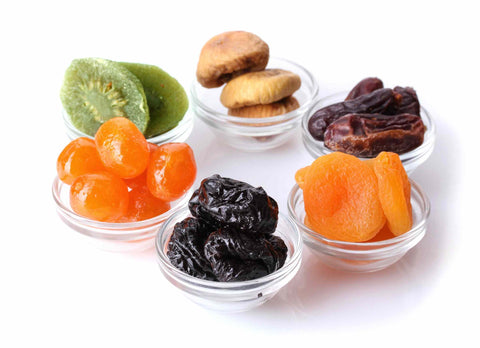
Each type of fruit can be used. Choose canned foods and dried fruits.
Dried Fruit
Dried fruits are an excellent choice for long-term storage. They provide a concentrated source of nutrients and a sweet treat that can be enjoyed in various ways.
- Why Include Dried Fruit? Dried fruits are ideal for snacking, adding to oatmeal, or rehydrating for use in recipes. They offer a versatile and nutrient-rich option.
Top Picks for Your Pantry:
- Dried Apples: Great for snacking or adding sweetness to dishes.
- Dried Bananas: Perfect for a quick energy boost.
- Dried Cranberries: Excellent for mixing into trail mixes or baking.
- Dried Blackberries: Rich in antioxidants, ideal for snacking.
- Dried Figs: A fiber-rich option that's sweet and satisfying.
- Dried Cherries: Perfect for adding a tart flavor to breakfast or snacks.
- Dried Blueberries: High in antioxidants, great for cereals or snacking.
- Storage Tips: Keep in airtight containers in a cool, dry place. Vacuum-sealing can extend their shelf life even further.
Canned Fruit
Canned fruits provide an easy and convenient way to enjoy fruit's taste and nutritional benefits, even when fresh options are unavailable.
- Benefits of Canned Fruit: Canned fruits can be a vital part of your stockpile, offering essential nutrients and variety in your diet. They're ready to eat and can be a quick way to add fruit to meals.
Selecting Canned Fruit:
- Canned Apples: A versatile option used in baking or as a snack.
- Canned Cranberries: Ideal for adding a tart flavor to meals and desserts.
- Canned Cherries: Perfect for making pies or enjoying as a sweet treat.
- Canned Mango: Adds tropical flair to smoothies or desserts.
- Canned Pears: Soft and sweet, excellent for desserts or alone.
- Canned Grapefruit: A refreshing option that can be enjoyed as a breakfast side.
- Canned Peaches: Delicious on their own or in desserts, providing a summery taste any time of the year.
- Shelf Life and Storage: While canned fruits should be consumed within 18 months for optimal quality, properly stored canned fruits can last longer. Store in a cool, dry place away from direct sunlight.
Additional Tips for Fruit Storage
Effectively managing your fruit stockpile ensures access to essential nutrients and variety throughout the year.
- Rotate Your Stockpile: First, replace older items with new ones to maintain a fresh and nutritious supply.
- Explore Variety: Incorporating a wide range of dried and canned fruits ensures a broad spectrum of vitamins and flavors.
- Creative Uses: To enrich your meals beyond direct consumption, consider using fruits in baking, cooking, or as toppings for cereals and desserts.
- Check for Damage: Regularly inspect canned goods for dents, rust, or swelling, as well as dried fruits for signs of moisture or mold, to keep your stockpile safe and healthy.
Incorporating Fruits into Emergency Meals
Having fruits on hand enhances the nutritional value and enjoyment of emergency meals, allowing for a semblance of normalcy and comfort during challenging times.
- Rehydrating Dried Fruits: Dried fruits can be rehydrated with water or juice and added to meals, giving them a fresh fruit taste.
- Canned Fruit Desserts: Use canned fruits to create simple desserts, such as fruit salads or toppings for cakes and pancakes to boost morale.
4. Canned Vegetables
Canned vegetables are essential in emergency food supplies. They offer longevity, convenience, and vital nutrients to support a balanced diet when fresh produce is unavailable.
Why Choose Canned Vegetables
Canned vegetables are indispensable for long-term food storage because they provide essential nutrients and maintain a much longer shelf life than their fresh counterparts. With proper storage, canned vegetables can remain edible and nutritious for up to five years, making them a reliable resource in any preparedness plan.
Selecting a Variety of Canned Vegetables
Diversity in your vegetable stockpile enhances the nutritional value of your meals and keeps dining interesting. Consider including a broad range of canned vegetables to ensure you receive a spectrum of vitamins, minerals, and flavors. Here are some must-have canned vegetables for your pantry:
- Canned Tomatoes: A versatile base for sauces, soups, and stews, providing vitamin C and lycopene.
- Canned Corn is sweet and filling. It can be served as a side dish or as an ingredient in soups and casseroles.
- Canned Mushrooms add depth to gravies, pasta, and pizza toppings. They also offer selenium and potassium.
- Canned Carrots: Rich in beta-carotene, carrots can be used in soups, stews, or as a nutritious snack.
- Canned Beets: Excellent for salads or side dishes, beets are high in fiber, folate, and vitamin C.
- Canned Green Beans: A versatile vegetable that can complement any meal, providing fiber and vitamin K.
Tips for Optimizing Your Canned Vegetable Stockpile
Maintaining a well-organized and preserved canned vegetable stockpile ensures a steady supply of essential nutrients during emergencies.
Here are some tips for optimizing your canned vegetable stockpile:
- Rotate Stock: Use the oldest items first to keep your supply fresh.
- Storage Conditions: Store cans in a cool, dry place to extend shelf life and maintain quality.
- Check Integrity: Inspect cans for dents, rust, or swelling to prevent health risks.
Expanding Your Canned Vegetable Stockpile
In addition to the staples listed above, consider adding these options to your emergency pantry for even more variety and nutrition:
- Canned Spinach: Packed with iron and vitamins A, C, and K, it quickly adds to meals for a nutritional boost.
- Canned Peas: High in protein and fiber, peas are a versatile addition to salads, soups, and sides.
- Canned Asparagus adds a gourmet touch to meals and is rich in fiber, folate, and vitamins A, C, and K.
- Canned Artichoke Hearts: Delicious in salads and pasta dishes, providing fiber, vitamin C, and magnesium.
Creative Uses for Canned Vegetables in Meals
Unlock the full potential of canned vegetables with these ideas:
- Vegetable Medleys: Mix several canned vegetables to create colorful and nutritious side dishes.
- Soups and Stews: Use canned tomatoes and other vegetables as the base for hearty and warming meals.
- Salads: Enhance green salads with canned beets, corn, or carrots for additional flavor and nutrition.
- Pasta Dishes: For added texture and taste, incorporate canned mushrooms, artichoke hearts, or asparagus into pasta sauces.
5. Protein
Protein is an essential macronutrient for muscle repair, immune function, and overall health. Thus, it is a vital component of any emergency food supply.
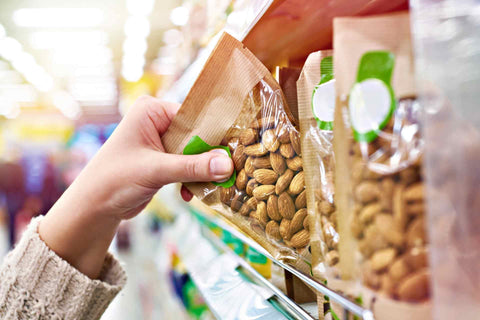
Diversifying Your Protein Sources
While meats and beans are traditional protein staples, expanding your stockpile with various protein sources ensures you meet daily nutritional needs, even in emergencies.
Here’s a closer look at additional protein-rich foods to consider:
- Whey Protein: A high-quality, easily digestible protein source, perfect for shakes or adding to meals and baking for a protein boost. It's an excellent option for post-workout recovery or getting enough protein.
- Protein Bars: Convenient, portable, and available in various flavors, protein bars can be a quick meal replacement or a snack to sustain energy levels throughout the day. Look for bars with low sugar content and high fiber for the best nutritional profile.
- Nuts: Almonds, walnuts, cashews, and other nuts provide healthy fats, protein, and essential vitamins and minerals. They’re great for snacking, adding to meals, or making trail mixes.
- Trail Mix: A mix of nuts, seeds, dried fruits, and sometimes chocolate, trail mix is a tasty, energy-dense snack for on-the-go nutrition.
- Peanut butter is versatile and rich in protein and healthy fats. It can be used in sandwiches, smoothies, or as a spoonful. It’s a comforting and familiar food that adds flavor and nutrition to various meals.
Tips for Storing Protein Sources
Ensuring your protein sources are properly stored and effectively used can significantly impact your nutritional intake during emergencies.
Here are tailored tips for maximizing the shelf life and utility of your protein stockpile:
- Proper Storage: Store whey protein in a cool, dry place. Seal nuts and trail mixes in airtight containers to extend their freshness. Store protein bars and peanut butter per the package instructions, usually in a cool, dry pantry.
- Check Expiration Dates: Regularly rotate your stock to use products nearing expiration and replace them with fresher options.
- Consider Nutritional Needs: Tailor your protein selections to any dietary restrictions or preferences in your household to ensure everyone can access suitable protein sources.
Expanding Protein Options in Your Pantry
To further enhance the protein content of your emergency food supply, consider these additions:
- Canned or dried beans and legumes are a staple in any pantry. They are rich in protein and fiber, making them incredibly filling and nutritious.
- Seeds: Chia seeds, flaxseeds, and hemp seeds are not only rich in protein but also omega-3 fatty acids, adding nutritional value and variety to your meals.
- Dairy or Plant-Based Milk Alternatives: Shelf-stable milk, whether dairy or plant-based (such as almond, soy, or oat), can provide another source of protein and is useful for cooking, baking, or drinking.
Incorporating Protein into Emergency Meals
Combining protein with creativity and planning can enhance your emergency food supply's nutritional balance and enjoyment.
- Creative Cooking: Use peanut butter to create satiating smoothies or sauces, sprinkle nuts or seeds on salads or oatmeal, and add whey protein to homemade bars or baked goods to increase the protein content.
- Meal Planning: Consider meals that can be easily enhanced with these protein sources, such as adding nuts to stir-fries, making protein-rich energy bars for snacks, or using peanut butter in desserts.
6. Beans (Canned & Dried)
Beans are indispensable in emergency food storage. They provide a rich source of plant-based protein, essential nutrients, and versatility in meal preparation.
Canned vs. Dried Beans
Beans offer both convenience and longevity. They can be stored in canned or dried varieties, each with benefits. Canned beans are ready to eat, making them a quick and convenient protein source. On the other hand, dried beans offer an unparalleled shelf life, making them a prime choice for long-term food security.
- Canned Beans: With a shelf life of 4-5 years, canned beans are an immediate source of nutrition that requires minimal preparation. They're ideal for quick meals and emergencies with limited time or resources.
- Dried Beans: When stored properly, dried beans can last up to 25-30 years. They are essential for a sustainable long-term stockpile. They require soaking and cooking but offer greater use and portion control flexibility.
Essential Bean Varieties to Stockpile
To ensure nutritional diversity and culinary variety, consider including a wide range of beans in your emergency pantry:
- Pinto Beans: Versatile and hearty, pinto beans are great for soups, stews, and refried beans.
- Black Beans: Rich in antioxidants, black beans can be used in various dishes, from salads to main courses.
- Black-eyed peas: With a unique flavor, these beans are perfect for soups, stews, and cultural dishes.
- Split Peas: A staple for making split pea soup, these are high in protein and fiber.
- Kidney Beans: Ideal for chili, salads, and side dishes, kidney beans are a nutrient-dense option.
- Garbanzo Beans (Chickpeas) are excellent for hummus, salads, and curries. They are a rich source of protein and fiber.
Tips for Storing Beans
Properly storing dried and canned beans is essential for maintaining their nutritional value and ensuring they remain a versatile and reliable component of your emergency food supply.
Here are some key strategies for optimizing the storage of your bean stockpile:
- Optimal Storage Conditions: To maximize their shelf life, keep dried beans in airtight containers in a cool, dry place. Store canned beans away from heat and moisture to prevent rusting and swelling.
- Rotation Is Key: To maintain quality and nutrition, regularly rotate your stock so that older beans are used first, and fresh supplies are replenished.
Expanding Your Bean Collection
For those looking to enhance their bean stockpile further:
- Lentils: Another excellent source of protein and fiber, lentils cook quickly and do not require soaking, making them a convenient option for emergency meals.
- Soybeans: Packed with protein, soybeans are a versatile addition to any pantry. They can be used to make tofu or enjoyed on their own.
- Navy Beans: Small, white, and mild-flavored, navy beans are perfect for baked beans, soups, and stews.
Utilizing Beans in Emergency Meals
Beans can be creatively incorporated into your diet in various ways to ensure you're getting enough protein and nutrients:
- Soups and Stews: Use any variety of beans to add substance and nutrition to soups and stews.
- Salads: Mix canned or cooked dried beans with vegetables for a quick, nutritious salad.
- Main Dishes: For filling meals, create bean-based dishes such as chili, bean burritos, or homemade veggie burgers.
7. Fats & Oils
When preparing your emergency food supply, it’s crucial not to overlook the importance of fats and oils.
These ingredients are vital for cooking and play a key role in maintaining a healthy diet by providing essential fatty acids and helping absorb fat-soluble vitamins.
Key Fats and Oils for Your Pantry
Incorporating a variety of fats and oils into your emergency stockpile ensures your body gets the necessary nutrients, especially beneficial fats like mono- and polyunsaturated fats and omega-3 fatty acids.
- Coconut Oil: With a high smoke point and a long shelf life, coconut oil is versatile for cooking and baking. It's rich in medium-chain triglycerides (MCTs), which are known for their health benefits.
- Extra Virgin Olive Oil: Ideal for dressings, marinades, and low-heat cooking, extra virgin olive oil is a great source of antioxidants and healthy fats. Store in a cool, dark place to maintain its quality.
- Canola Oil: A kitchen staple with a light flavor and high smoke point, making it suitable for frying, baking, and grilling. It’s a source of omega-3 and omega-6 fatty acids.
- Lard: An animal fat that is making a comeback in healthy kitchens. Lard is great for high-heat cooking and baking and offers a source of vitamin D.
- Shortening: While not as healthy as the other options, shortening has a high smoke point and is useful in baking or situations where long shelf life and stability are required.
Tips for Storing Fats and Oils
Fats and oils must maintain their quality and nutritional value to be effective in emergencies. This requires specific storage techniques and regular checks.
Here are tips for optimizing the storage of your fats and oils:
- Cool, Dark Places: Store oils in a cool, dark area to extend their shelf life. Light and heat can cause oils to spoil more quickly.
- Airtight Containers: Keep fats and oils in airtight containers to protect them from oxidation and maintain freshness.
- Check Regularly: Oils can go rancid over time, so it’s important to smell and taste them before use to ensure they haven’t spoiled.
Expanding Your Fats & Oils Selection
To ensure a well-rounded supply of fats in your pantry:
- Avocado Oil: With a high smoke point, avocado oil is perfect for high-heat cooking and is rich in monounsaturated fats.
- Sesame Oil: Adds a flavorful touch to Asian dishes and salads, rich in antioxidants.
- Ghee is clarified lactose-free butter. It has a high smoke point and is rich in butyric acid, making it ideal for cooking.
Using Fats and Oils in Emergency Meals
Fats and oils add flavor to meals and are crucial for emergency calorie intake. Here are some ideas for incorporating them into your meals:
- Cooking Medium: Use them as a base for sautéing vegetables or meats to add depth and flavor.
- Flavor Enhancer: Drizzle olive oil over salads or add coconut oil to smoothies for a nutritional boost.
- Preservation: Fats and oils can preserve foods, such as confits or preserved cheeses and meats in fat.
8. Dairy (Dried)
Incorporating dairy into your emergency food supply may be challenging due to preservation issues with fresh products.

However, dry dairy options provide a viable and practical solution, ensuring you get all your dairy needs.
Advantages of Dry Dairy
Dry dairy products offer the dual benefits of a long shelf life and space efficiency, making them ideal for those who need to maintain a balanced diet for extended periods without access to fresh milk or cheese.
Key Dry Dairy Products to Stockpile
- Powdered Milk: An essential item for any prepper's pantry, powdered milk can be reconstituted with water to produce liquid milk, used in baking, or added to coffee and tea.
- Nutritional Value: Provides calcium, vitamin D, and protein.
- Storage Tips: Store in a cool, dry place. Properly stored, it can last for years without significantly losing quality.
- Cheese Powder adds flavor to dishes and can be used to make cheese sauces, season popcorn, or top various meals.
- Varieties: Includes cheddar, mozzarella, and parmesan, among others.
- Usage: Ideal for enhancing the taste of casseroles, soups, and homemade snacks.
Expanding Your Dry Dairy Selection
To diversify your dairy stockpile further and add more nutritional value, consider including:
- Dry Yogurt Powder: Great for smoothies or as a base for homemade yogurt.
- Benefits: Contains probiotics for digestive health.
- Preparation: Can be rehydrated for a creamy texture or used in baking.
- Butter Powder: Adds richness to baked goods and can be used as a spread when rehydrated.
- Storage: Like other dry dairy products, it should be kept in a cool, dry place to extend its shelf life.
Tips for Using Dry Dairy in Emergency Meals
Maximizing dry dairy products in emergency meals can greatly enhance your food supply's flavor and nutritional content.
Here are some tips to effectively incorporate these items into your diet during times of need:
- Hydration: Learn the correct ratios for rehydrating your dry dairy products to achieve the desired consistency and flavor.
- Creative Cooking: Experiment with powdered milk in your baking recipes, or sprinkle cheese powder on popcorn for a delicious treat.
- Nutritional Boost: Incorporate powdered milk into oatmeal, cereals, or smoothies for an added nutritional punch.
9. Herbs & Spices
Herbs and spices are often overlooked when stocking up for emergencies, yet they are crucial for transforming simple meals into enjoyable, flavorful experiences. Beyond just taste, these ingredients can also provide health benefits, making them indispensable for a well-rounded emergency food supply.
Essential Herbs and Spices for Your Pantry
A diverse selection of herbs and spices can elevate the taste of any meal, ensuring that food remains appealing and nutritious even when needed.
- Salt: The most fundamental seasoning that enhances the flavor of virtually all dishes. It is also vital for preserving food.
- Pepper (Black and/or Cayenne): This pepper adds heat and depth to dishes, and cayenne pepper offers an additional metabolism boost.
- Cumin: Brings a warm, earthy flavor to soups, stews, and meats and is essential for creating spice blends.
- Oregano: With its bold, aromatic flavor, oregano is perfect for Italian, Mexican, and Mediterranean dishes.
- Basil: A staple herb for Italian cuisine, basil can freshen up any tomato-based dish and salad.
- Coriander (Seeds and/or Ground): Offers a citrusy, nutty flavor ideal for various culinary applications, from Indian curries to Mexican salsas.
- Thyme: Its subtle, earthy flavor works well in soups, stews, and with poultry.
- Parsley: Brightens flavors, adds a fresh note to dishes, and serves as a garnish.
- Dill: Known for its role in pickling, dill also enhances the flavor of fish, salads, and dips.
- Garlic Powder adds a robust flavor to dishes without the need for fresh garlic, making it a convenient and long-lasting option.
- Ginger Powder: Brings a spicy, warm flavor for baking, soups, and Asian dishes.
- Chili Powder: Offers heat and complexity to chili, soups, and meats and is essential for Mexican and Southwestern cuisines.
Tips for Storing Herbs and Spices
Ensuring the longevity and effectiveness of your herbs and spices can significantly enhance your emergency cooking in terms of flavor and nutritional benefits.
Here are focused tips for optimally storing these precious ingredients and innovative ways to use them in your meals:
- Airtight Containers: Store in airtight containers to protect from moisture and preserve freshness and potency.
- Cool, Dark Place: Avoid direct sunlight and heat sources to prevent loss of flavor and color.
- Label and Date: Mark containers with purchase dates to ensure you use older stocks first and keep your collection fresh.
Expanding Your Flavor Palette
Consider these additional herbs and spices to diversify your meals further:
- Turmeric: Known for its anti-inflammatory properties and vibrant color, it's great in rice dishes and curries.
- Smoked Paprika: Adds a smoky flavor and rich color to meats, soups, and stews.
- Cinnamon: Not just for desserts, cinnamon can add warmth and sweetness to savory dishes as well.
Utilizing Herbs and Spices in Emergency Cooking
Incorporating herbs and spices into your emergency meals can transform basic ingredients into delightful dishes while providing health benefits.
- Experiment with Blends: Create your spice blends for quick seasoning of meals.
- Enhance Basic Recipes: Use herbs and spices to turn simple ingredients into flavorful, satisfying dishes.
- Health Benefits: Many herbs and spices offer health benefits, so incorporating them into your diet can support overall well-being during stressful times.
10. Canned Meals
Canned meals are a stellar choice for those who want to bolster emergency food supplies with easy-to-prepare, nutritious options. Their shelf life of 3 to 5 years makes them a reliable staple for short-term stockpiling.

The Advantages of Canned Meals
Canned meals offer convenience without sacrificing taste or nutritional value, and they provide a range of options to suit any preference.
- Convenience: Ready-to-eat straight from the can, these meals save cooking time and energy.
- Nutrition: Many canned meals are balanced and contain various nutrients, making them a healthy option in a pinch.
- Variety: The wide selection available means you can enjoy different cuisines and flavors, preventing palate fatigue.
Key Canned Meals for Your Pantry
Enhancing your pantry with a diverse selection of canned meals ensures you're prepared for any situation with tasty, nourishing options.
- Canned Soups: A comfort food staple, soups come in many varieties, from classic chicken noodles to hearty vegetable beef, offering warmth and nutrition.
- Storage Tip: Rotate your stock to enjoy the best flavor, and check cans for bulging or damage before use.
- Canned Chili: Packed with protein and spices, chili is a filling meal that can be enjoyed alone or as a topping for hot dogs or baked potatoes.
- Serving Suggestion: Enhance with shredded cheese or diced onions for extra flavor.
- Canned Stews: Rich and satisfying, canned stews offer a "home-cooked" taste with the convenience of a ready-to-eat meal. They're perfect for colder days or when you need a quick, fulfilling dish.
- Variety: Look for beef stew, chicken stew, and vegetarian options to cater to all dietary preferences.
- Baked Beans are rich in fiber and protein and can be served as a versatile side dish or a meal.
- Creative Uses: Combine with rice or spread over toast for an easy, nutritious meal.
Expanding Your Selection of Canned Meals
For those looking to diversify their canned meal options further, consider exploring:
- Canned Pasta: From ravioli to spaghetti in tomato sauce, canned pasta dishes are a hit with kids and adults alike, offering a quick carb fix.
- Canned Curry: Enjoy the flavors of Indian or Thai cuisine with canned curries that only need reheating, serving as an exotic and easy meal option.
Tips for Incorporating Canned Meals into Your Diet
Incorporating canned meals into your diet can significantly enhance your emergency food supply's convenience and nutritional balance, especially when combined creatively with other ingredients.
Here are tips for making the most out of canned meals in your diet:
- Balance with Fresh Ingredients: Enhancing canned meals with fresh vegetables or herbs can elevate their taste and nutritional content, bringing a fresh twist to convenience foods.
- Mix and Match: Combining different canned meals or integrating them with staples like rice or pasta can create more satisfying and varied dishes, ensuring you enjoy comfort and nutrition.
11. Sugars
While not essential for survival, sugars are a valuable addition to any emergency food stockpile, providing energy and comfort during stressful times.
Choosing the right types of sugars for long-term storage can ensure you have the sweeteners needed for various culinary uses, from enhancing the flavor of beverages to baking.
Choosing the Right Sugars
Selecting stable and versatile sugars for long-term storage is crucial for maintaining a well-rounded emergency pantry.
- Sugarcane (Granulated Sugar): The most common form of sugar, granulated white sugar from sugarcane, is highly refined and stable for long-term storage. It's ideal for sweetening beverages, baking, and cooking.
- Storage Tips: Keep in a cool, dry place in an airtight container to prevent clumping and extend shelf life.
- Sugar from Beets (Granulated Sugar): Beet sugar is similar to sugarcane sugar in use and refinement. It is another excellent option for long-term storage and offers the same versatility in sweetening and cooking.
- Storage Considerations: Like sugarcane sugar, store it in an airtight container away from moisture and odors.
- Corn Sugar (Dextrose): This fine powder dissolves easily in liquids and is often used in baking and brewing. It is a good choice for sweetening drinks or specific recipes that call for less sweet, more easily fermentable sugar.
- Best Uses: Ideal for homemade sodas, brewing, and as a less-refined sweetener in baking.
- Honey: With its natural preservatives, honey is an excellent sugar alternative that can last indefinitely when stored properly. It's perfect for sweetening and baking and has additional medicinal properties.
- Health Benefits: Besides its sweetening capabilities, honey is known for its antibacterial and antifungal properties, making it a multipurpose pantry staple.
Expanding Your Sweetener Selection
To add variety and functionality to your stockpile, consider these additional sweeteners:
- Maple Syrup offers a distinctive flavor and natural sweetness. It is great for baking and for baking breakfast items. Store in a cool, dark place; once opened, refrigeration is necessary.
- Agave Syrup: A low-glycemic index sweetener, agave is suitable for sweetening beverages and desserts. When stored properly, it offers a longer shelf life.
- Molasses: Rich in minerals and robust flavor, molasses is excellent for baking and as a nutritional supplement.
Tips for Using Sugars and Sweeteners in Emergency Cooking
Incorporating sugars and sweeteners into your emergency cooking enhances flavor and enjoyment, provides essential energy, and can aid food preservation.
Here are some strategies for effectively utilizing these ingredients in your meals and food storage practices:
- Dessert Preparation: Use your stored sugars and honey to create comforting desserts that boost morale.
- Flavor Enhancement: A little sugar can balance the flavors in savory dishes, adding depth and complexity.
- Preservation: Sugars and honey can be used to preserve fruits, make jams, and perform other canning processes.
12. Water
Water is indisputably the most essential element to include in your emergency food storage system, crucial for survival and often taken for granted until supply is compromised.

Understanding Water Needs
Ensuring an adequate water supply is foundational to emergency preparedness, and specific strategies are needed for storage and usage.
- Daily Water Intake: The recommended guideline is to allocate 1 gallon of water per person daily, accounting for drinking, cooking, and basic hygiene needs.
- Bottled Water: Stockpiling cases of bottled water provides a ready-to-use, portable hydration solution ideal for immediate needs and short-term emergencies.
- Long-Term Storage Solutions: Investing in larger water storage options like water tanks or barrels can secure your water supply for extended periods. To maintain water quality, these containers should be placed in your property's cool, dark area, like a basement or a shaded outdoor space.
Expanding Your Water Preparedness
To enhance your emergency water plan further, consider these additional measures:
- Water Purification Methods: Having methods for water purification, such as boiling, chemical purifiers (iodine tablets, chlorine bleach), or filtration systems, ensures you can make water from various sources safe to drink.
- Rainwater Collection Systems: Setting up a rainwater collection system can supplement your water stockpile, providing an additional source for non-potable uses or potable if properly treated.
- Water Conservation Strategies: Learning and planning for water conservation techniques can stretch your water supply further during emergencies. Simple practices like reusing cooking water or capturing shower water while waiting to warm up can make a significant difference.
Tips for Water Storage and Safety
Ensuring the safety and availability of your water supply is crucial in emergencies. It requires careful storage practices and awareness of local resources.
Here are some key strategies for maintaining your water storage and ensuring its safety for use:
- Rotate Water Supplies Regularly: Like food, water supplies should be used and replenished regularly to ensure freshness and safety.
- Inspect Storage Containers: To maintain a secure water supply, check storage containers periodically for leaks or signs of contamination and replace them as needed.
- Stay Informed on Local Water Sources: Knowing the location and accessibility of local water sources, such as lakes, rivers, or public wells, can be invaluable if your stored supply runs low.
Things to consider in storing survival foods:

Buying survival food is necessary, but it's more crucial to store it properly. If you don't, everything will spoil, and you might not have preserved anything!
Consider your storage an investment that will be priceless in times of need. Following are some suggestions for stockpiling survival food:
- No moisture should be present (zero humidity or dripping water).
- No pests present
- For your food to last longer, the temperature should not be higher than 80 degrees or lower than 70 degrees.
- No direct sunlight
Head to Your Nearest Grocery and Start Stockpiling!
Understanding and implementing the essentials of survival food stockpiling is more than just a precaution; it's a proactive approach to ensuring your and your loved ones' safety and well-being during unforeseen circumstances.
The diversity of items available at your local grocery store, from grains and proteins to water and sweeteners, can form the basis of a robust emergency food supply.
The key to effective food storage lies in selecting the right items and understanding the importance of proper storage conditions, such as avoiding moisture, pests, and direct sunlight and maintaining an optimal temperature range.
 Remember, the time to start preparing is now. Use moments of normalcy to build and refine your stockpile, taking advantage of the absence of panic buying and shortages.
Remember, the time to start preparing is now. Use moments of normalcy to build and refine your stockpile, taking advantage of the absence of panic buying and shortages.
Given the current global uncertainty, the value of a well-prepared food storage system cannot be overstated. It invests in peace of mind, security, and future stability.
In conclusion, stockpiling survival foods is an act of foresight and responsibility. Whether facing natural disasters, pandemics, or economic downturns, a well-planned emergency food supply is your first line of defense.
Start small if necessary, but start now. Prioritize essential nutrients, familiarize yourself with storage tips, and gradually expand your collection.
The effort you put into preparing today can make a significant difference tomorrow. It will ensure that you and your family are ready, resilient, and well-nourished, regardless of the future.



